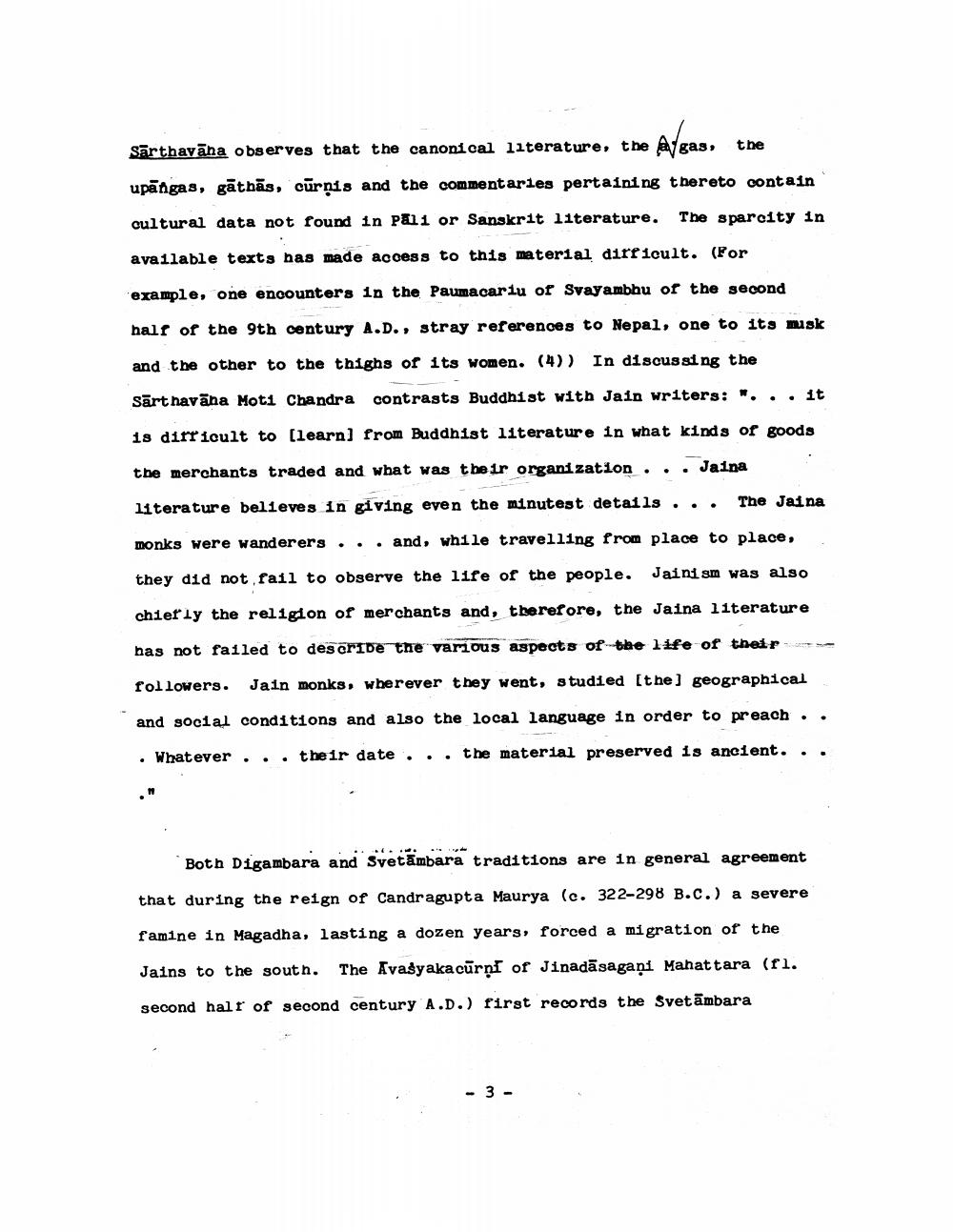________________
Sārthavana observes that the canonical literature, the a/gas, the upangas, gātbās, cūrņis and the commentaries pertaining thereto contain cultural data not found in pali or Sanskrit literature. The sparcity in
available texts has made access to this material dire icult. (For
example, one encounters in the Paumacariu of Svayambhu of the second
half of the 9th century A.D., stray references to Nepal, one to its misk
and the other to the thighs of its women. (4)) In discussing the
Sārt navāna Moti Chandra contrasts Buddhist with Jain writers: "...it
is dirricult to learn) from Buddhist literature in what kinds of goods the merchants traded and what was their organization ... Jaina
11terature believes in giving even the minutest details ...
The Jaina
monks were wanderers ... and, while travelling from place to place,
they did not fail to observe the life of the people. Jainism was also
chietly the religion of merchants and, therefore, the Jaina literature
has not failed to describe the various aspects of the le of their
followers. Jain monks, wherever they went, studied [the] geographical
and social conditions and also the local language in order to preach .. • Whatever ... their date ... the material preserved is ancient. ..
Both Digambara and Syetambara traditions are in general agreement
that during the reign of Candragupta Maurya (c. 322-298 B.C.) a severe
famine in Magadha, lasting a dozen years, forced a migration of the
Jains to the south. The Avašyakacūrni of Jinadāsagaại Mahattara (ri.
second half of second century A.D.) first records the Svetāmbara
-
3 -




